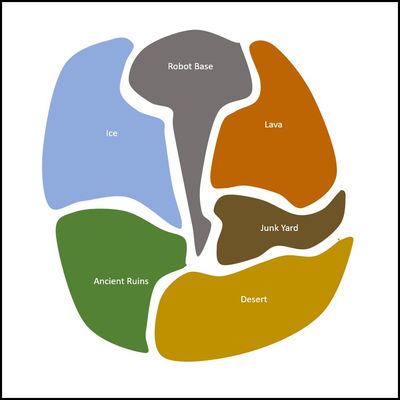GigaConomy
Role:
Level Designer/Game Designer
Description:
A 3D arcade platformer where you deliver packages for a corporation on a hostile planet.
Tools:
Unity, Photoshop, Office Suite
Team Size: 7
Duration:
12 Weeks
This was the Capstone project of myself and 6 other students demonstrating our learning and additionally presented on stage and at a booth at Canadian National Exhibition's Gaming Garage.
I was all over this project but some of my duties included:
-
Creating comprehensive design and reference documentation.
-
Rapidly designed multiple level iterations in order to test and explore design ideas during preproduction phase.
-
Developing and adapting a collaborative level design methodology informed by the game's core design and the strengths of the team.
-
Designing level sections for the "Ice/Snow Region" from paper prototype to blockout to final arting pass.
-
Arranging and scripting level-wide mission events and objects.
-
Scripting and hosting external and internal playtesting sessions.
-
Analyzing qualitative and quantitative feedback.
-
Communicating and collaborating with programmers to address design needs, scope, and limitations.
-
Collaborating closely with other level designers, artists, and programmers.
-
Overseeing and ensuring quality in milestone builds.
-
Sound Design and Music!
Gameplay
Details
Pre-production
Concept Adaptation
The initial concept pitch, 'Intergalactic Instacart,' involved receiving orders, collecting items in a grocery store, and traveling to their goal while dealing with enemies in an open world.
The group refined this concept by focusing on the delivery aspect as the core gameplay loop, settling on "Speed & Navigation" as the game's core verbs.
The plan was to focus on landmarks and paths for the game's level design, allowing players to develop a mental map of the level, similar to how cab drivers or bike couriers navigate a city efficiently.
With these core pillars established, myself and the other designers brainstormed distinct environments that would lend themselves well to our game's theme and gameplay goals.
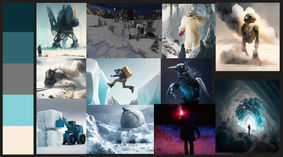
Diagrams
For moment-to-moment gameplay, we wanted to support multiple playstyles and incorporate them into the game's decision making, so we established both platforming and combat to be options in pathing. Additionally, early on in the design we intended on the game to have an upgrade path intended to introduce a risk-reward element to the game loop.
Flow Diagram
Basic flow of gameplay using minimal beats.
Level Circulation
Simple level circuit - tessellation of flow.
Level Diagrams
Bubble diagram to outline environments, considering level circulation.
Parti iteration of bubble diagram, relative to environmental qualities.
Final parti diagram, emphasizing influence of robot base and iterating on environmental boundaries.
Documentation
I have included PDF copies of a Level Design Document (LDD) and a Game Design Document (GDD). They are rather lengthy, but they're here if you're curious.
These represent the collaborative work of myself and my team during the pre-production phase.
Level Design Document
Game Design Document
Production Begins!
Metrics Gym
I created a metrics gym to evaluate character metrics, established script variables for the character controller, logged the data in a spreadsheet.
This info was shared and iterated upon with fellow designers and programmers.
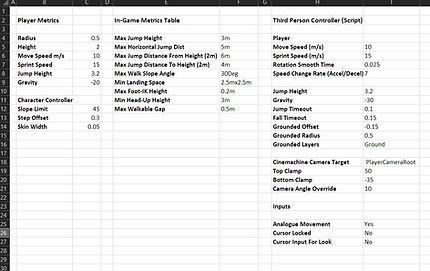
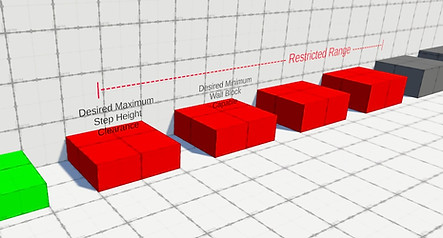
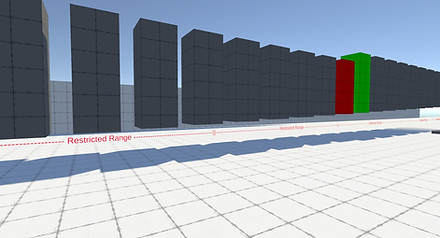
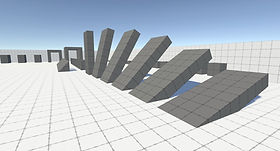
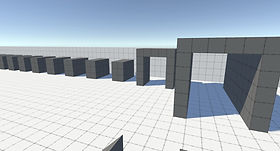
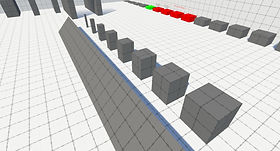
One takeaway I have about this stage in development is that while creating a gym environment useful for finding min/max dimensions, it lacked the context of common gameplay. This led to player metrics being primarily based on the gym's geometry. As a result, we had to reassess these player metrics when actual gameplay scenarios were introduced later in development.
Demo Playground
By the 3rd week, we designed a series of "gauntlets" to test the implementation of mechanics, these were like little obstacle courses that introduced our game's mechanics with linearly increasing challenge (easy, medium, hard).
There were 6 gauntlets in total, I was responsible for the delivery, jumping, floating enemy and running gauntlets.
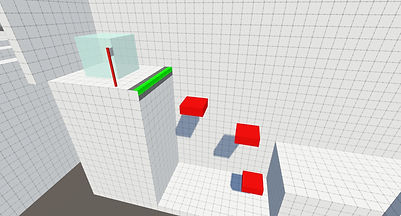
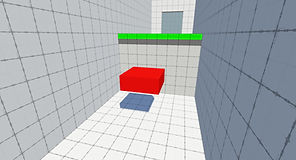
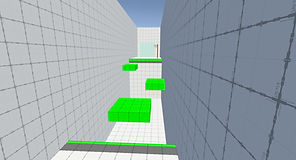
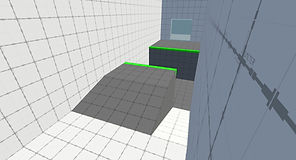
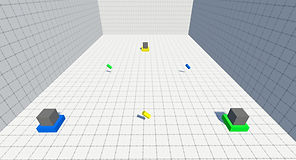
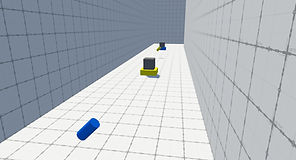
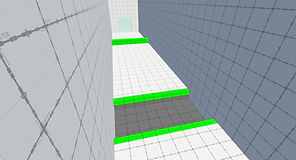
During this process came new metrics to consider, namely the observe/act/react player metrics.
Additionally, after internal testing, the group decided to shift from developing an in-house third person controller to inheriting one from the unity asset store, which rapidly increased the speed of design moving forward as we had a more responsive controller.
Week 5 Playtest Build
Time to get some feedback!
Development of a playtest build was iterative of our gauntlet design, however it was made as a series of layered beats, gradually introducing new mechanics throughout the intended playthrough.
I did a great deal of the design for this build, plotting out the beats and designing many of the sections.
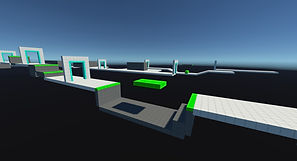

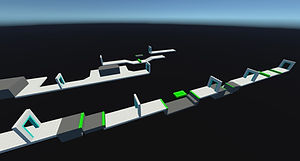
I designed these sections iteratively, creating different scenarios based on the type of beat (jump over, jump across, double jump, speed boost, destructable walls, etc) and created as many varieties for each beat as I could come up with.
I found it useful to approximate the flow and observe/act/reaction cycles by developing beat sections iteratively in a string-of-pearls fashion, this gave me a rough understanding of how much space was needed for the player to comfortably engage with the beat in question for each section.

Using a beat chart I plotted out teaching moments for each mechanic interleaved with one another, laying it out like this allowed me to have a broader view on the overall trend of the level as well as the distribution of beats.
From here, I found direction for creating new sections to fill voids in certain areas, things that were needed for the map or areas that simply weren't designed yet, which I would then work on.
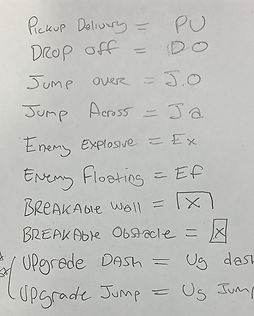
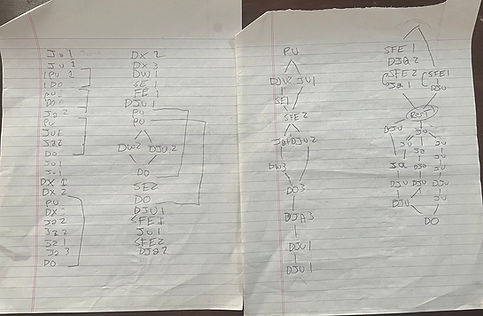
This also was an area for me to experiment with unique gameplay moments, pathing, interactions and even some early set-pieces.
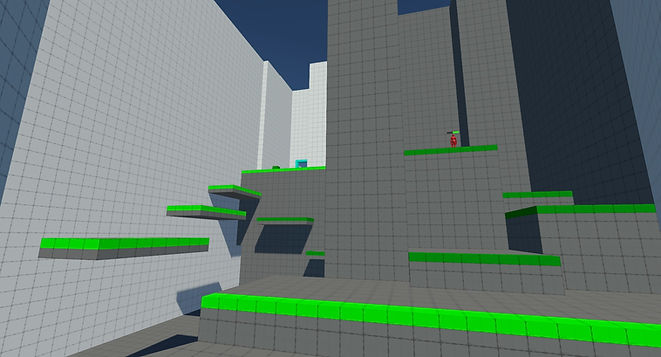
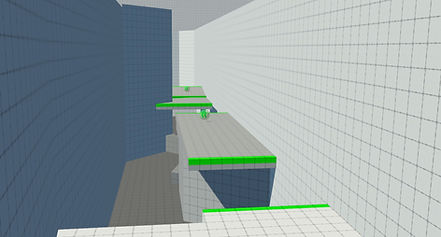
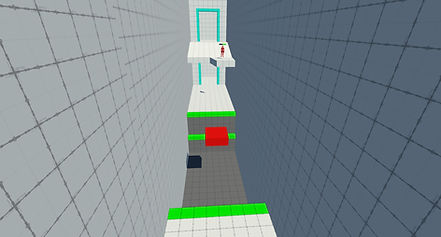
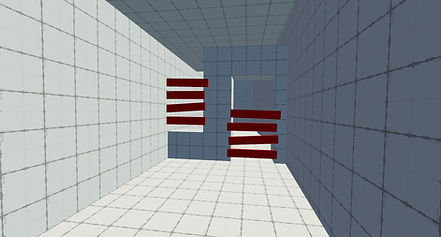
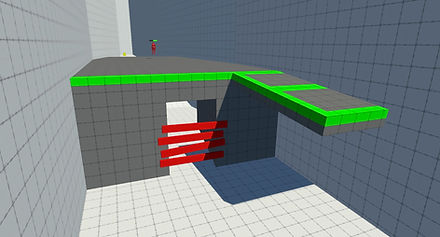
Playtest Level Gameplay
The Playtest
For the playtest proper, I created a playtest "script", delegating tasks to each member of the team and deciding on the setup of the playtesting stations.
Each station had a supplemental document displaying concept art and control scheme as well as a playtest questionnaire on a secondary monitor, and the build running with a controller available on the primary monitor.

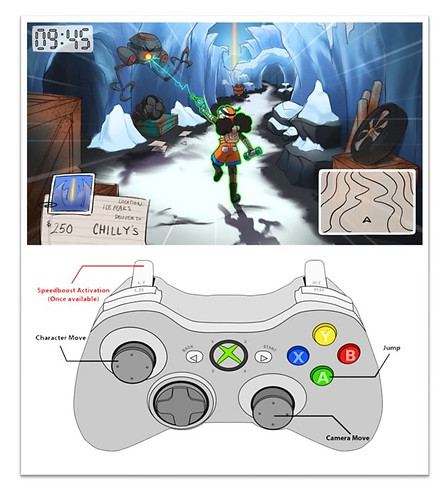
Feedback Analysis
After the playtest was completed, I gathered the questionnaire answers and proceeded to review and codify the responses into a document in order to analyze feedback and make adjustments.
This included a visualization, editorial interpretation, and a simplified action item:
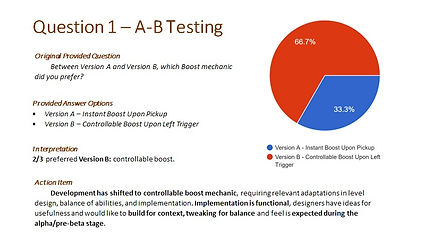
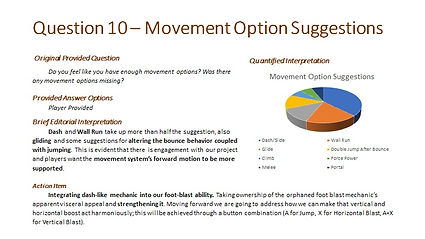
Documentation
I have included PDF copies of documentation related to the playtest that I had authored during this period. The Playtest Feedback Analysis document includes the detailed findings of the playtest questionnaire and the Playtest Script document includes playtest procedure instructions and supplemental documents provided during the test.
Playtest Feedback Analysis
Playtest Script
Alpha
Level Concepting
For the alpha level, we had the idea for a metroidvania-style progression to the game.
From partis and group discussion, I had outlined the game's map as a series of segmented concentric circles, with the segments representing environmental regions.
Partis started from the knowledge that we will need to support speed and flow, a fixation on figure-8 and circuit design informed this parti process.
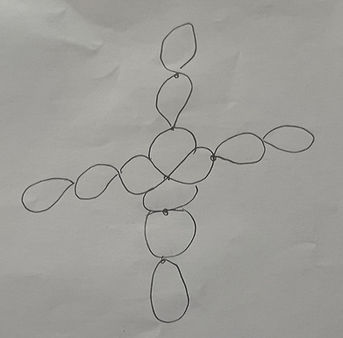
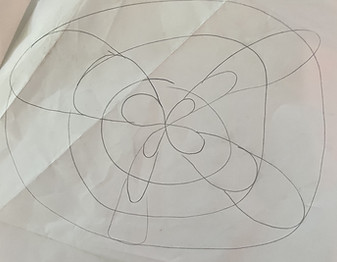

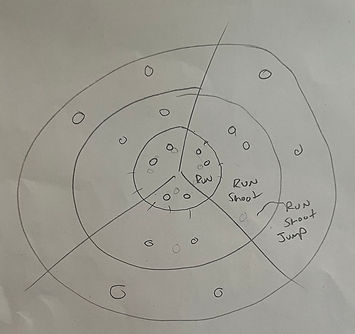
My main takeaways from this process was a self-similar design, where the concentric shapes would share and reinforce routing between each other.
Using the same beats I worked with previously, I mapped out a linear sequence.
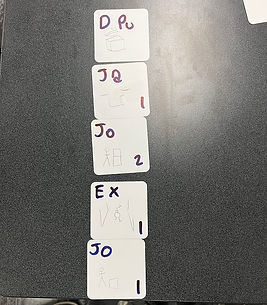
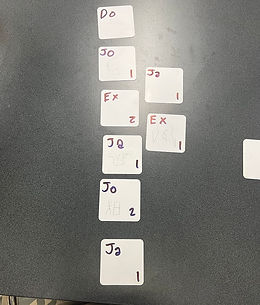
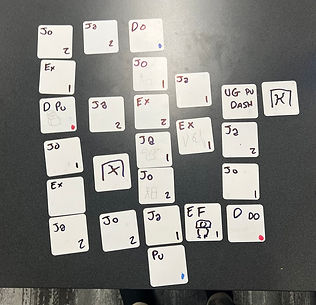
From here, I would iterate alternate routing and create other linear sequences of beats crossing over the others, similar to how someone would develop a crossword. During this, I was consulting with the other designers on the rationality of the pathing. In some cases, I would sketch scenarios on the beat cards to get a better feel of the beat.
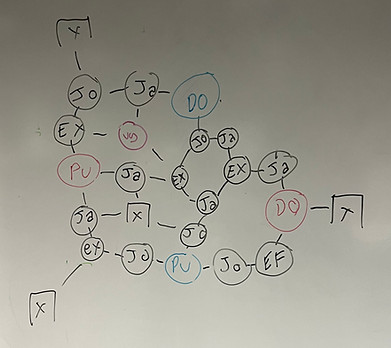

I brought the layout to the whiteboard in order to iterate further and get a better feel for the spatial relationships between beats. This was the basis for my first pass at my alpha level section.
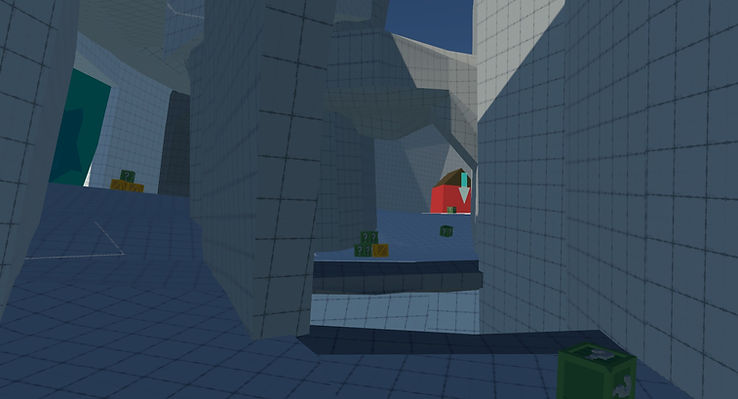
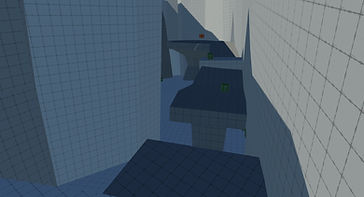

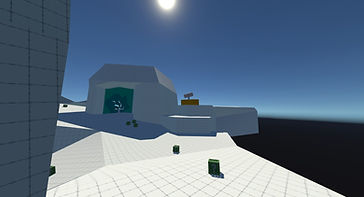
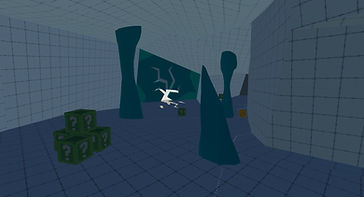
Design Experimentation
Following some feedback, the group felt that the gameplay and level design of the alpha was not meeting the goals of the project; speed and navigation.
Removing much of the level enclosure and increasing the player speed brought the project a lot closer to our goals. Immediately, level sightlines improved, the player's sense of control improved, and dropping those enclosures introduced soft barriers that added a new dynamics to navigation.
I consider this point a major breakthrough in my understanding of this game's level design.


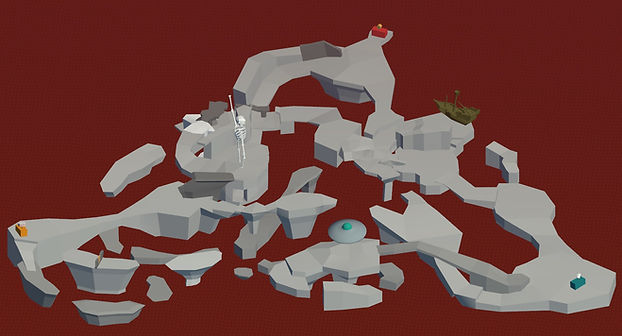
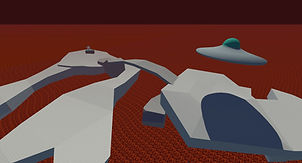
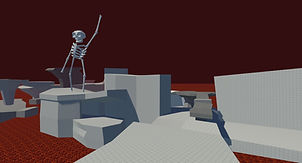
I added large models at the pickup/delivery locations primarily as placeholders for landmarks. This served as a quick and cheap way to make the areas memorable and was integrated into the HUD design, aiding spatial memory and navigation. This approach influenced my level's design further into the development.
Documentation
Early on in the Alpha stage, I drafted a Mission System Design Document.
This document made as a reference for programmers during development of the mission system and UI.
It covers what information the player will be receiving and at what times.
Mission System Design Doc
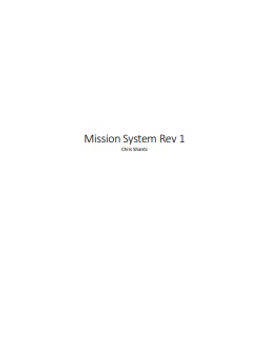
Beta
Methodology Pipeline
It was evident that while the Alpha level was a breakthrough, it lacked purposeful design.
We additionally needed to address how 3 level designers were going to approach collaborating.
As a group, we decided to design independently using 250mx250m "hexagonal beat cells", within these cells we would establish a primary focus of at least one beat/moment or "quality". Each cell had entry/exit points delineated for each edge of the hexagon, this was used as a guide for connection points between cells.
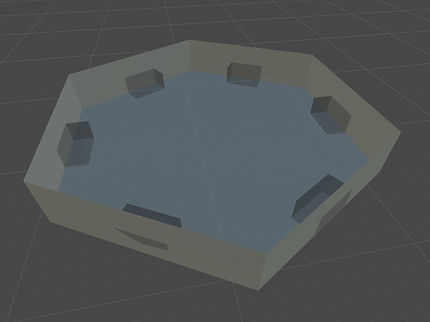
This method allowed for quick iteration and for designers to focus on the rational design of the section without concerning themselves yet with how these areas will interconnect. Knowing the player will be typically passing through these locations they were designed with circulation in mind.
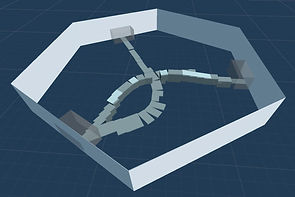

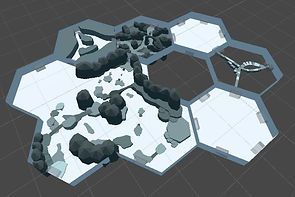
In some cases, hex cells were merged to allow for a larger area. Personally, I found it helpful to design my sections both in isolation and within a scene in order to gain some context.
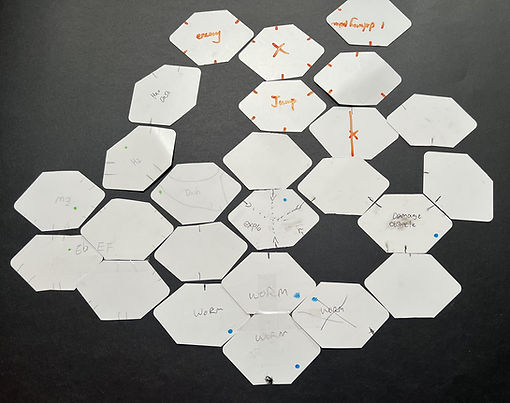
After a week of developing these cells, the designers convened to establish the world layout for these sections.
I cut out hexagonally shaped cards and distributed them to each designer to represent each of the hexagonal beat cells they worked on, including marking them to indicate their primary quality and entry/exit locations.
From here, similar to the previous beat-charting that I did for alpha, we puzzled our locations together using these cards creating an outline for the entire level, we added new blank cards to fill gaps and assigned these new pieces accordingly.
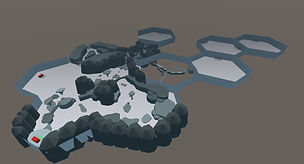

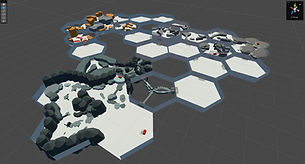
By the end, we had established the entire level's layout and adapted that to a new scene, beginning a new phase in development.
Around this point the locations in my sections began to gain identities. Working with the artist, we gained some placeholder assets that aided in design an in some cases helped with conceptualizing, however for a large part most of my locations were created using Unity's probuilder tools.
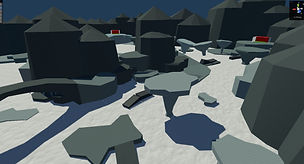
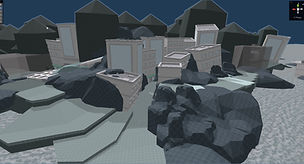
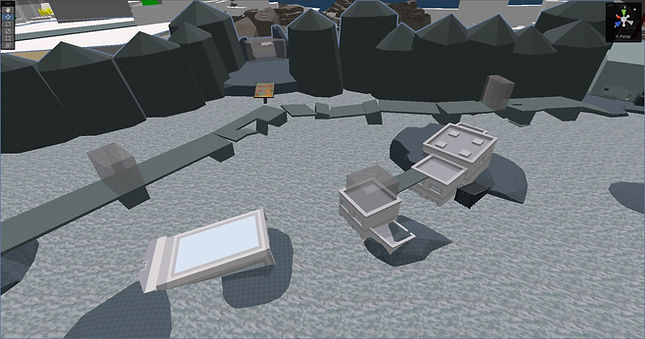
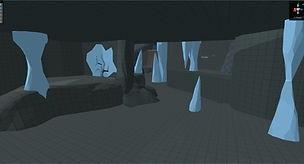
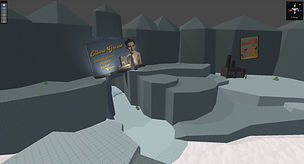
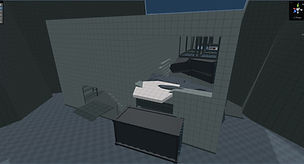
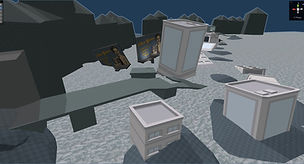
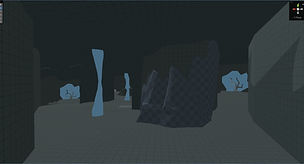
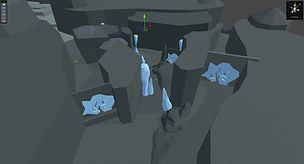
Level Scripting
Throughout development, I was responsible for level scripting of the mission system, applied directly to the pickup and dropoff objects in the shared level scene.
I was not involved in the game code (aside from a few hacks early/late in development), but was responsible for setting and testing the values of scriptable objects related to each delivery mission.
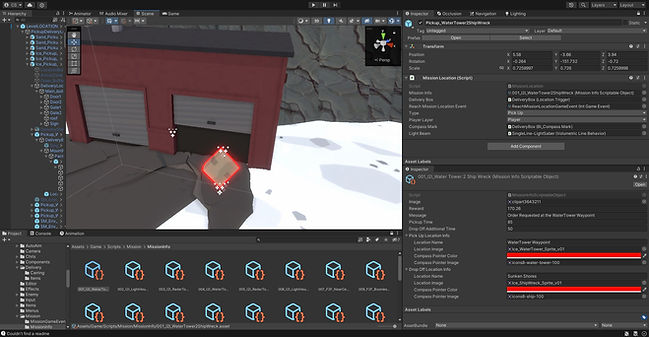
Documentation
Hexagonal Beat Cell Brief

I have included a PDF copy of the Hexagonal Beat Cell Brief I authored as a reference for the other designers.
This includes guidelines for a naming convention and use of prefab variants.
This helped keep the designers on the same page and allowed for a smoother design process when rationalizing multiple designers' work.
Art Pass
Early in this stage, we performed a focuse test. Our big takeaways were needing to increase clarity in player pathing and tuning mission difficutly, so the designers once again reconvened to assess progress.

Primarily, this time, we focused on finalizing the locations of pickup/dropoff points level-wide, we realized we needed to increase the frequency of delivery locations in order to allow for shorter pathing. For the most part, each designer had a good idea as to where their locations would be, and even had designed some areas around this.
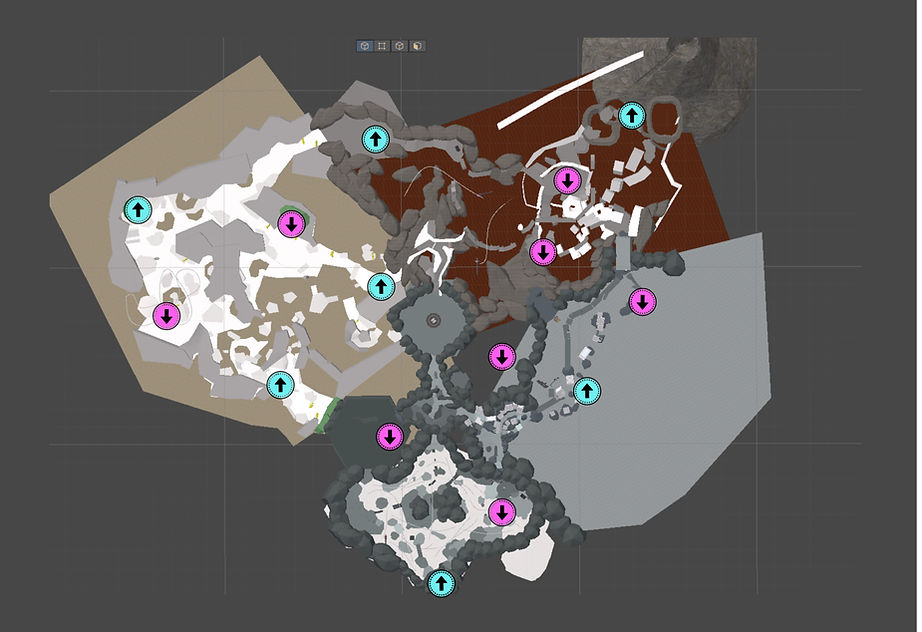
We took this opportunity, however, to critically evaluate the spacing and distribution of these locations as well as their status as pickup/dropoff locations.
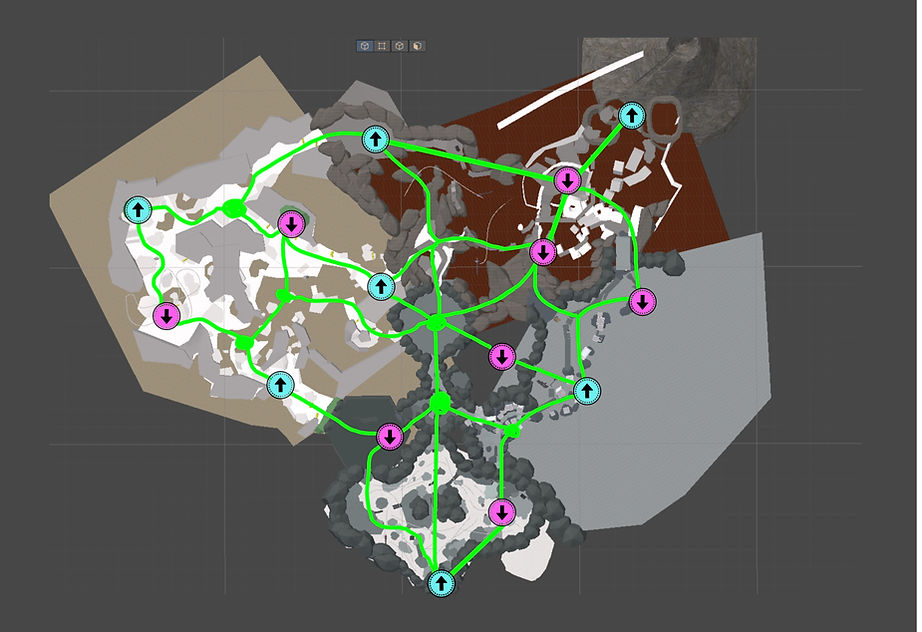
We marked up the delivery locations as well as the primary paths between these locations, as well as terminal locations that became apparent between these points. Some of the pathing was already planned and need to be reinforced, however some pathing was a result of observation during playtests.
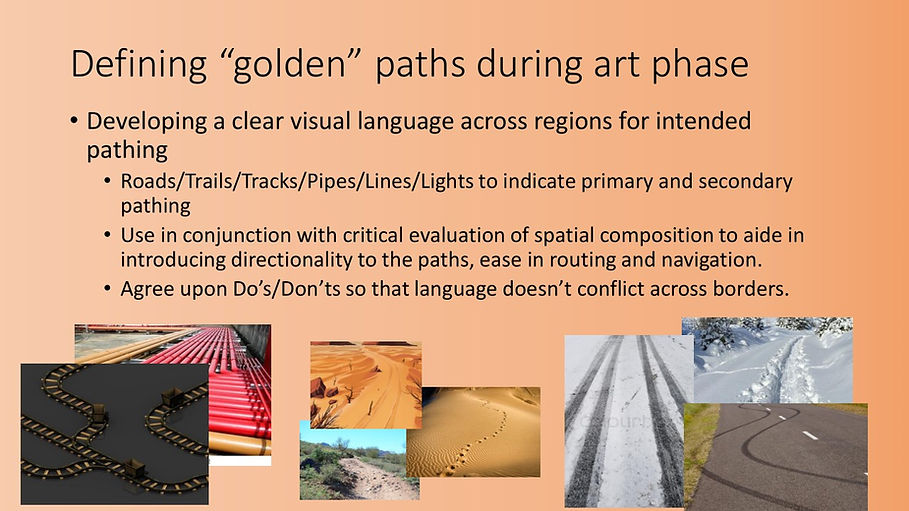
Our approach was to try and address pathing clarity while working on the art, creating distinct language for intended pathways in each region. This was a great opportunity to utilize and reinforce desire lines throughout our level.
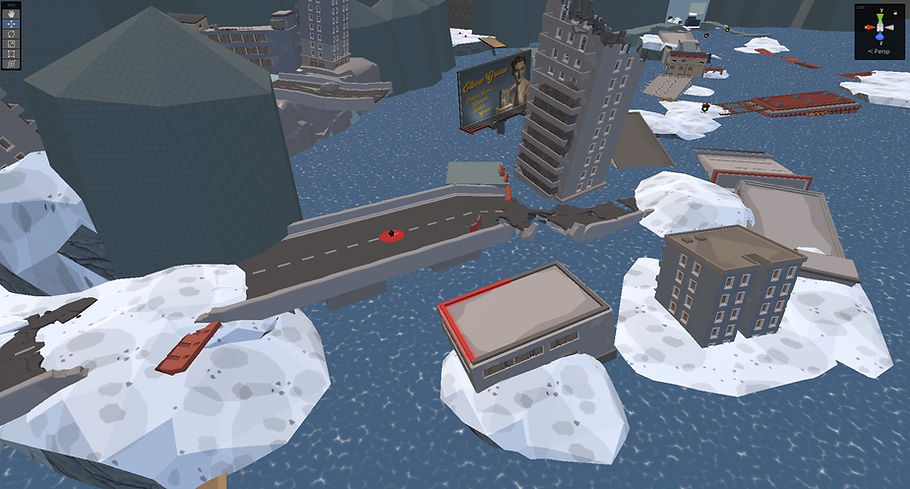
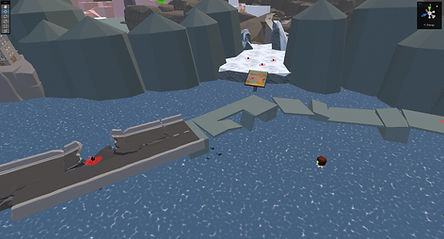
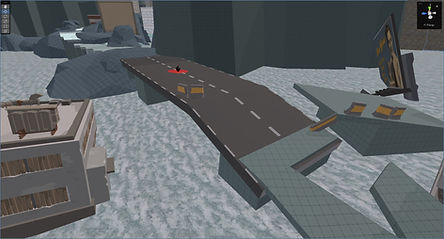
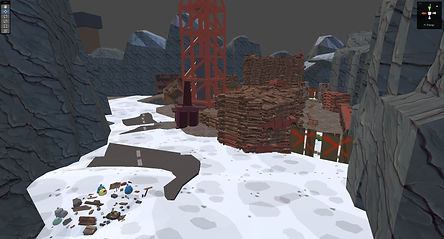
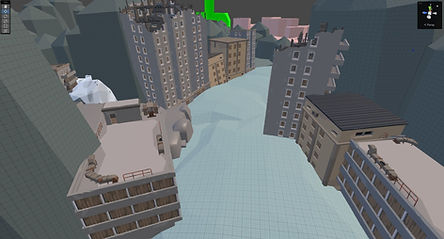
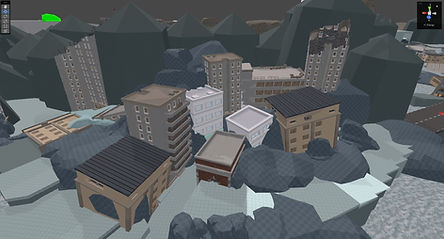
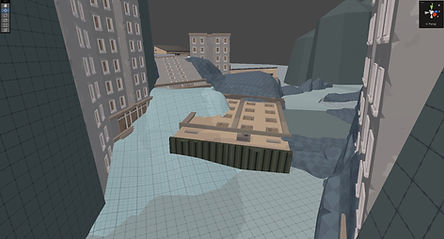
Documentation
I have included PDF copies of a Post-Focustest Action Items Brief and an Audio Design Document that I had authored during the final phase of development.























